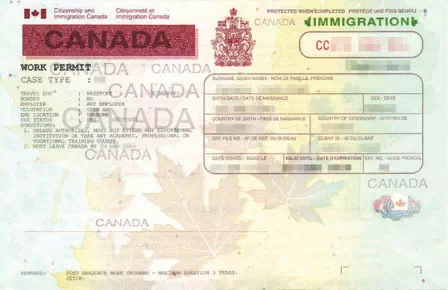A work permit is an authorization that the Government of Canada grants to foreign workers to work in the national territory. There are closed and open work permits. Closed work permits are assigned to people to work with a specific employer; open work permits are generally assigned to refugee and to spouses of lieutenants of closed work permits or study. For purposes of this article, the permit we will discuss is closed unless otherwise specified.
Who should apply for the Work Permit?
The Work Permit must be requested by the future employee. Only authorized third parties, such as certified migration consultants, can execute this process on your behalf.
How much does a Work Permit cost?
The cost is approximately 150 Canadian dollars for work permits of any kind. Openwork permits require an additional payment of 100 Canadian dollars. Payments are made through the Government of Canada website or in-person (if you are at the border).
If you come with a family member, you must pay for each of them. Your spouse can apply for an open work permit and your economic dependents (children) will get a visitor's permit (enough to study in Canada).
The processing fee must be paid by the future employee.
What to do to apply for a Work Permit?
First, we recommend reading our article about the requirements of a work permit.
The Government of Canada website has an explanation, but it seems that it is not very clear to everyone. See below what to do first:
- If you still do not have a job offer, the first step is to create the curriculum with Canadian standards. In Canada, a curriculum is required for each job application
- Find your NOC, all professions in Canada are identified. Take into account that you must satisfy all the requirements of the selected NOC. The NOC code must be consistent with the job offer and with the LMIA code or LMIA exception
- Find out if you require an LMIA. Otherwise, the employer must obtain an exception code from LMIA
- Obtain an invitation letter addressed to the CIC from the employer and another letter to you confirming the vacancy. This letter is very important, it must be consistent with the selected NOC and with the documentation presented. The letter must have a letterhead with the business' data.
- Fill out the forms. You can attach a letter explaining the lack of a document or why it is there
- Translate all documentation to English or French to support the claims that are in the form. Translations can be issued in English or French directly by the institution or translated by a certified translator. Many certified translators do not need to have the original in hand to translate it, a good scanned image is enough. Some documents are:
- Birth certificate, yours and all the family members that could accompany
- Marriage certificate (if applicable)
- Diploma
- Transcripts
There are three ways to send the application:
- Online, regardless of whether or not it is located in Canadian territory. Payment for processing will be done online.
- Sending it via postal mail. You must attach proof of payment.
- Appearing at the border. You can go by land, sea or air to any of the entry points and ask the agent you would like to apply for a work permit. Check which entry point is the best for you, not all entry points offer migratory services. The advantage or disadvantage that you can have here is that the answer will be obtained at that moment. As a small tip, going during peak hours requires the immigration agent to make a quick decision; If you put together all your documentation correctly, it is very likely that you will get permission immediately.
